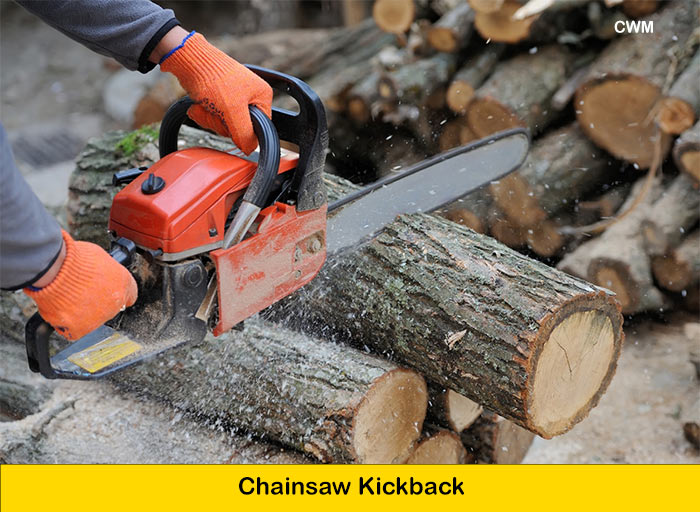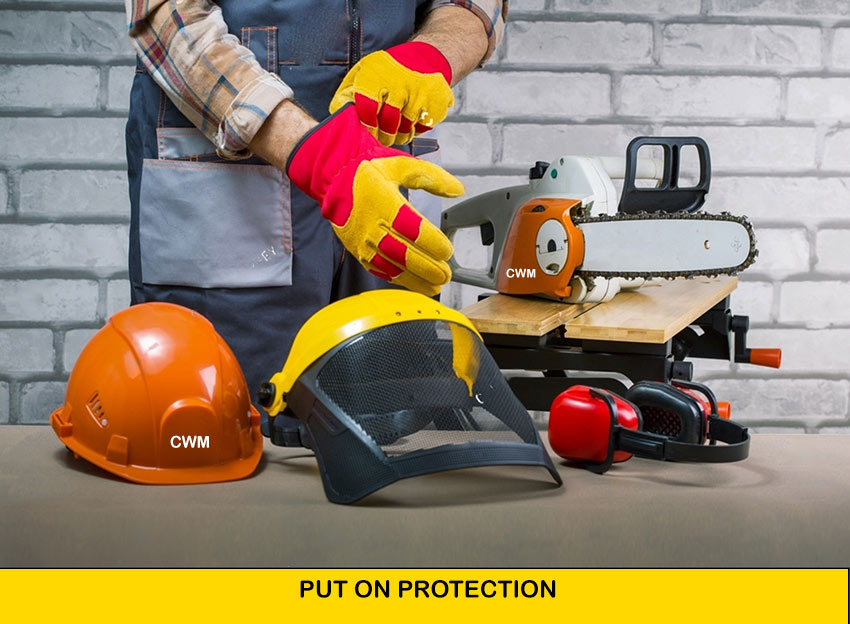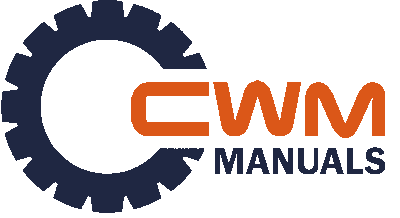In this chainsaw article, we’ll look at methods for reducing kickback so you can stay safe when cutting. Kickback is one of the biggest risks you’ll probably face when operating a chainsaw. As the saying goes, prevention is better than cure, and when utilizing a chainsaw, that saying is even more applicable given the potential severity of the repercussions.
What then is a kickback? One of the primary reasons for chainsaw accidents is the quick, unexpected upward motion of the chainsaw’s guide bar, to put it simply. This movement is quite quick and might catch you off guard, especially if you’ve never seen it before.
Table of Contents
Kickback can happen for a variety of reasons, including the following:
- Using the saw incorrectly.
- Little or no chain maintenance, resulting in such things as a worn chain, or a bent or fractured guide bar.
- Wrong settings and shapes for the chain gauge depth.
There is what is known as a kickback hazard zone while operating a chainsaw. This is a reference to the location where there is a very high danger of kickback, which is the top of the chainsaw bar’s tip. The likelihood of kickback increases with the size of the bar nose and is most likely to happen when the tip of the bar contacts a branch or log.
How The Construction Of The Chainsaw Might Lessen The Risks
A chainsaw is designed with a variety of safety precautions that are intended to lessen the frequency and severity of kickbacks. For instance, the majority of homeowner chainsaws have minimized kickback bars and low kickback chains. Narrow nose bars, like the Oregon Double Guard Bar, will increase safety to the fullest. A low kickback chain complies with all of ANSI B175.1 2012’s safety criteria.
Chain brakes, which are essentially a component of the front hand guard on larger chainsaws, are also available. The user’s left hand automatically moves the guard-forward in the case of kickback, engaging the brake and instantly stopping the chain. Before using, make sure the chain brake is operational.
However, no safety device can ensure your safety, so it’s crucial to make sure you operate the chainsaw safely.
Take heed of the following chainsaw safety advice:
- Hold the chainsaw firmly in both hands with your thumbs and fingers surrounding the handles when the engine or motor is operating. Be aware that the chainsaw will pull forward when cutting along the bottom edge of the bar and backward when cutting along the top edge.
- When cutting, keep your balance and good footing.
- Prevent letting the bar’s tip make touch with any obstacles, including branches, the ground, or other objects.
- Never cut shoulder height.
- Use just the bars and chains that the chainsaw supplier advises.
- Keep in mind that the moving chain should never come into contact with anything at the guide bar’s tip.
- Ensure that your chainsaw is well-maintained and properly functional. This also means making sure the chain is sharp and correctly tensioned. The likelihood of kickback will rise with slack or dull chain.
- Only start cutting when the chain is going at maximum speed since backlash is more likely when the chain is moving slowly. Additionally, you should proceed with great caution if you are re-entering a previous cut. Before cutting, check sure the chain is moving at maximum speed and that the bumper spikes (ribbed bumpers) are firmly seated in the wood.

Put On The Proper Protection
I’m sure you have been told this many times before but it’s still worth repeating, ‘always uses proper protection‘.
To protect commonly damaged parts of the body, you should always make sure the proper safety gear is used. This includes boots, hard helmets, eye protection, gloves, and chainsaw chaps. Avoid wearing outfits that are excessively tight or loose.

Manufacturers operating manuals and safety advice are all freely available from this website for your brand of chainsaw.
Chainsaw Kickback Questions and Answers
How do you reduce a kickback on a chainsaw?
Read the manual.
Make sure the chain brake works before you start.
Use low-kickback chains.
Use a sharp chain.
Be wary when felling tree trunks.
Pay attention to the nose of your chainsaw bar.
What are the 4 forces of a chainsaw?
Reactive forces: Kickback, pushback, pull-in. The powerful force used to cut wood can be reversed and work against you. If the rotating chain is suddenly stopped by contact with a solid object, such as a log or branch, or is pinched, a reactive force may occur instantly.
What is the most common chainsaw injury?
The majority of the injuries involve the hands and lower extremities with less than 10% involving injuries to the head and neck regions. Deaths while operating a chainsaw are extremely rare. The most common hazards associated with chainsaws are injuries caused by kickback, pushback, and pull-in.
Why does my chainsaw jump when cutting?
Tension is too loose, the teeth are dull, or the material is too thick. A blade that does not have enough tension will wander. It will also flex from side to side, making for irregular or angled cuts.
What not to do when using a chainsaw?
Do not start a chainsaw when it is resting against any part of your body.
Do not stand directly behind the saw.
Do not leave a saw running unattended.
Do not carry chainsaws while it is running.
Avoid contact with the muffler. Serious skin burns may result.
Do not cut alone.
What does the term “kickback danger zone” mean?
The term “kickback danger zone” refers to the top of the tip of the chainsaw bar. This area has a high kickback risk. You should never saw using this part of the chain saw bar, since doing so will significantly increase the chances that you will experience kickback.
What is Kickback?
One of the most frequent reasons for chainsaw accidents is kickback, which is the phrase used to describe the abrupt upward motion of the chainsaw’s guide bar. The lightning-fast kickback of a chainsaw may be extremely dangerous and may cause significant damage if correct-cutting procedures are not used.
Do Electric chainsaws have kickbacks?
Safety chains are used on electric chainsaws to reduce the frequency of kickbacks. Additionally, because electric chainsaws lack the same force as their gasoline-powered siblings, kickback violence is much less.
Should the chainsaw brake be forward or back?
Similar to a handbrake in an automobile, the chain brake is engaged if it is locked in the forward position. The chain brake is off if it is back and loose. Chain brakes should never be turned off while starting a chainsaw; they should only be turned on when beginning a cut.
What is rotational kickback?
The most frequent and hazardous kickback is called rotational kickback. Never contact the upper tip of the saw with anything to prevent it; otherwise, the saw will kick back at you. Due to this, it is wise to choose a left-facing position.
What is linear kickback?
Linear kickback causes the entire chainsaw to be thrust back at you at full speed if the wood being cut pinches the chain on either side. Never pinch the chain.
What is pull-in kickback?
Your chainsaw can be pulled forward and away from you if it runs against a branch or even a hidden nail on the opposite end of the piece of wood. Before cutting, be sure to inspect the area you’ll be cutting.
In addition to the advice given above, below are a few further safety measures when cutting:
Avoid overextending yourself, cutting over your shoulders, and cutting more than one log or branch at a time.
Use the emergency stopping option if the saw does kick back, strikes anything, or simply begins vibrating a bit too much. It is better to be safe than extremely sorry.
You are the best safety feature of chainsaw safety. You only have one life that you know of!
Safer is preferable than terribly sorry
Not an Experienced Chain Saw User? Use Low Kickback Chain
Most chainsaws on the market now include features that lessen kickbacks and other causes of injuries caused by chainsaws. To recap what was mentioned earlier in this article: Chain brakes, the front (left) hand guard, the bar tip guard, and low or decreased kickback chain and guide bars are some of these built-in features. You need to ensure that your chainsaw is correctly installed and that all the components are firmly fastened and operational in order to ensure the efficiency of these safety features.
Use a low kickback chain unless you have expertise or training dealing with chainsaw kickback. Low kickback chain is marketed in North America with a green designation from the American National Standards Institute (ANSI).
Chainsaw kickback Conclusion
In conclusion, chainsaw kickback is a serious hazard that can cause injury or damage. By understanding the proper technique for using a chainsaw, using a low-kickback cutting chain, using a chainsaw with an anti-vibration feature, maintaining your chainsaw, and wearing the proper safety gear, you can greatly reduce the risk of kickback and staying safe while using a chainsaw.


Had a close call with a chainsaw once – kickback caught me off guard and I almost lost control. It’s a powerful tool, but you gotta respect it and be cautious at all times. Always make sure you’ve got a good grip and follow proper safety guidelines to avoid any accidents.
I recently had a personal experience with chainsaw kickback and it was a wake-up call for me. I knew about the dangers of kickback, but I never thought it would happen to me. After the incident, I came across this blog post on chainsaw kickback and how to avoid it and stay safe. The information provided was incredibly helpful and educational. I was able to understand the causes of kickback and implement the tips to improve my chainsaw handling. The article truly made a difference in my confidence while using a chainsaw. I highly recommend this article to anyone who uses a chainsaw, whether you’ve had a personal experience with kickback or not. It’s a must-read for anyone looking to stay safe while using this powerful tool